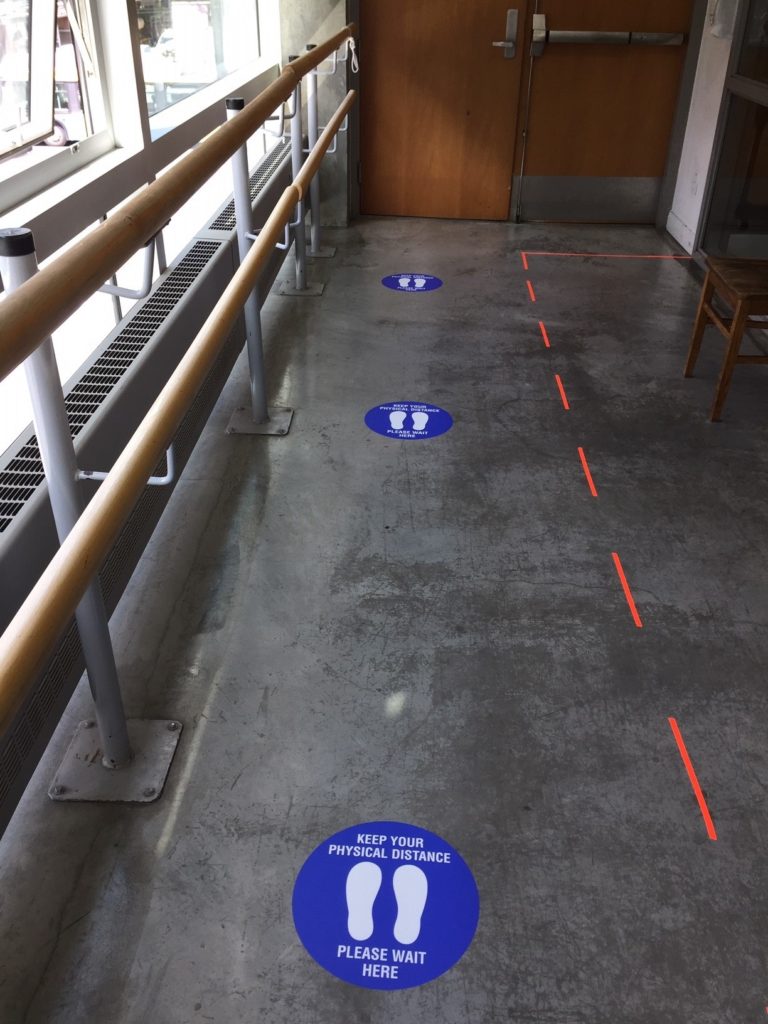Weathering COVID-19: Presenting dance in the new reality - Vancouver Ballet Society
- Home
- Features 2020 - 2023
- Weathering COVID-19: Presenting dance in the new reality

By Robin J. Miller
March 12, 2020: Dance Victoria was one day away from presenting Ballet BC’s Romeo and Juliet at Victoria’s Royal Theatre. Thirty-two dancers had just arrived by ferry. Then BC’s public health chief, Dr. Bonnie Henry, made her fateful announcement. “We thought the shuttering of theatres wouldn’t happen until the next week, that we might just be able to scrape through,” says Stephen White, executive producer of Dance Victoria, but it was not to be. March 13, 2020: Thirty-two despondent dancers rode the ferry back to Vancouver. “It broke my heart,” White says.
The final company scheduled for the 2019-2020 season, Mexico’s Tania Pérez-Salas Compañía de Danza, also fell victim to the virus. At first, Dance Victoria though it could re-schedule the lost performances as early as the summer, but the realities of two-week quarantines for international companies and strict guidelines about large gatherings soon began to sink in. “Then we thought we might be okay with the next season,” White says, which had already been announced, with many subscriptions sold. As restrictions continued into May, however, with no vaccine in sight, the organization shifted its focus again, to a possible late winter/spring 2021 season only. Finally, even that was ruled out. On May 20, subscribers (who will receive full refunds), donors and sponsors were told that the entire 2020-2021 season had been suspended.

In a video message, White spoke of being devastated about the loss of a whole season, but also outlined new plans that include focusing “on local dance artists and dancemakers through mentorship and other programs,” as well as a return to some intimate, physically distanced live performances in the studios Dance Victoria also operates until mainstage performances return in 2021-2022.
White feels confident that, with promises from government arts funders that grants will continue, tremendous response from the public, many of whom readily donated the value of their tickets from the cancelled shows to the organization, and the number of donors and sponsors who have pledged to hang in and continue their support, Dance Victoria will survive intact. Now, he says, it’s a matter of figuring out how to retain people’s interest and commitment over the long haul until major live performances begin again. “I was feeling sorry for myself, then I did some yoga. We’re going to have to be innovative. We haven’t rushed to do a lot of online or virtual stuff yet, but we’ve provided links for our subscribers to a couple of productions.”
Jim Smith, artistic director of Vancouver’s DanceHouse series, feels lucky that he had not yet announced their 2020-2021 season and so has avoided White’s pain at being the bearer of bad news. But that’s not to say his life has been any easier.

DanceHouse concentrates on presenting international companies with international reputations, and connecting both the public and local artists to those companies through a variety of live engagement and education activities. Of course, both presentation and live engagement are out the window now. Says Smith, “Fifty percent of our season happened and 50 percent went down — roadkill under COVID-19.”
The result has been a forced existential examination of the organization’s vision and mission. “Convening people in a space to participate in a shared experience has been at the centre of what we saw ourselves doing,” says Smith. “When that’s taken off the table, you have to go back and re-interpret your values or find some way to extend those values to find another way to execute your mission.”
All this has led Smith to two conclusions. First, he says, “I come down on the side that thinks there will be an even greater hunger for the convening of people in shared experiences, so I actually think the things we offer will have a renaissance in the future.” Second, “in the short term, there are opportunities for innovation. This is a moment to dig deep and look at alternative ways for how individuals engage with the arts.” For DanceHouse right now, this does not mean a rush into live streaming.
“Dance for the camera is a very, very complex way of producing work,” says Smith. While you can certainly just throw up a single camera to document a piece, “taking a stage production and filming it properly is costly and takes multiple cameras, plus camera rehearsals, etc.” Instead, Smith is interested in presenting well-filmed archival performances.
“Here’s an opportunity,” he says, “to program critical works that have been captured to a very high level for the camera. Offering them to audiences can round out their historical perspective on how we got where we are today in dance.” Smith is thinking primarily about Canadian work. “While we present lots of international content, it’s always in service to understanding the Canadian context — that is, we bring in work from elsewhere in the world so that we can rub it up against the experiences we have with work created by Canadians.” He is working now on a tentative plan for a digital series that “adds value to what is already going on elsewhere.”
The Dance Centre in Vancouver also presents international work, though with a more experimental focus than DanceHouse. It too, says executive director Mirna Zagar, has decided not to work with international artists in the season ahead, and probably not even dancers from elsewhere in Canada, given the many unknowns surrounding the pandemic and its effect on touring and presenting. “Our focus now,” she says, “is on working with local artists, and trying to identify how we can rethink engaging and creating the excitement, intimacy and proximity of live performance through a different medium.”

Zagar is asking each dance artist she talks to if they can imagine how a work — existing or new — could be presented through livestream video instead of, or in addition to, some version of live performance with a small audience that is physically distanced both from each other and from the dance, as well as, possibly, physically distanced dancers. “Do they feel that the work is appropriate to livestream? What does it mean now to work in a practice that involves the body and promotes proximity, partnering? Can this work engage people when they are sitting apart?”
The Dance Centre is also beginning to survey its audiences to find out how comfortable they are “in coming back to the [live] form, in being present,” says Zagar. Their answers will help shape a presentation series she hopes will begin in September. At the same time, the organization is working on a multitude of other projects intended to bring life back into its offices, theatres and studios at Scotiabank Dance Centre, which normally welcomes more than 60,000 people a year, and restart its artist development and community programs.

“To be honest,” says Zagar, “I did not anticipate how busy we have been supporting our membership, and also creating and providing online content, which is something new for us.” That online content has included interviews with dance artists, Zoom classes with seniors and a series of commissioned solo micro-works on the theme of social distancing. Commissioning is, says Zagar, “a way of keeping dancers employed and giving some hope. It’s also about our responsibility to the community because, for dance artists in particular, this is a very challenging time: you suddenly need to rethink your own body, the only tool you have to communicate your art form. How does that work now?”
It’s a great question, but one with no answer, or at least not yet. Dancers and the dance community are nothing if not creative, however, and Jim Smith for one believes that “the future looks quite rosy on the other side.”

